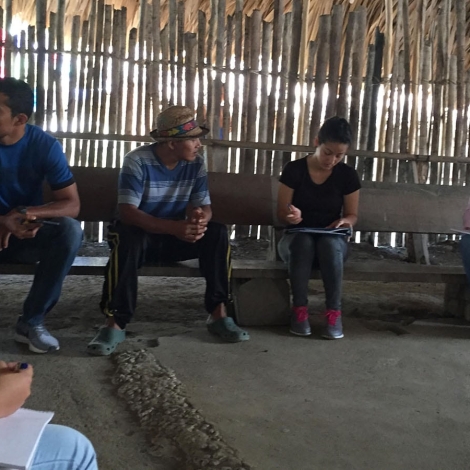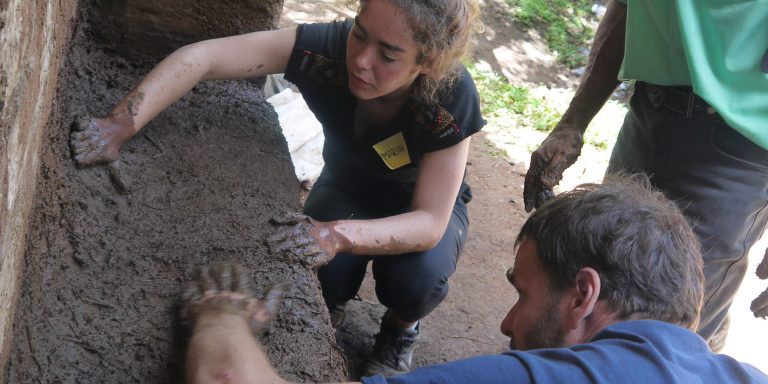Around the world 2.7 billion people still depend on biomass as a cooking fuel. In Central and South America, 57 million people do not have access to clean or improved cookstoves, with 20 million concentrated in Central America, representing approximately half of the region’s population.
The use of biomass for cooking over open fires or rudimentary stoves causes premature death due to household air pollution, including disease such as acute infections of the lower respiratory tract. Annually, 37,000 people die prematurely in Central America due to household air pollution. These cook fires also contribute to deforestation around communities that depend on forest biomass to cook their food. In countries such as El Salvador, which has lost 80 percent of its forest cover over the last two decades, the intensive use of biomass for cooking contributes significantly to the ongoing deforestation.
A survey conducted in the Guna of Madungandí indigenous community found interest in the adoption of new cooking methods.
The development of solutions for the energy crisis in Central America regarding the use of firewood as fuel began in 1970 and since then, designs focused on the plancha-type stove have been implemented improving the access to clean cooking practices. The plancha-type stove’s design includes an iron plate that facilitates the preparation of tortillas. In countries such as Guatemala, El Salvador, Nicaragua, Honduras and even Mexico, where tortillas are a staple food, the dissemination of this type of stoves has been successful. In these countries, the use of technology adapted to culinary customs in conjunction with inter-institutional collaboration has allowed the adoption of improved stoves.
While the plancha stove has been accepted by some Central American countries and its environmental and health benefits have been proven, in countries such as Panama, its implementation or that of other improved stoves has received little attention. This is due to the limited initiatives implemented by the government and the fact that the tortilla is not a staple food in Panama unlike most of its neighboring Central American countries, thus restricting the implementation of the most accepted technology in the region.
In Panama, 16 percent of the population still cooks with firewood, being a predominant problem in more than half of the country’s rural population and in most of its indigenous communities. In the case of indigenous communities, approximately 87 percent of households cook with firewood collected mainly from their granted territories. Therefore, the current problem regarding the cooking traditions of Panamanian indigenous populations is not only a health issue but an environmental problem because of the use of the forest cover as fuelwood. Although rigorous studies regarding household air pollution and its implications for health have not yet been carried out in these communities; when visiting them it is possible to note the household contamination caused by the burning of firewood.
In the last 15 years, every country in Central America has improved access to clean fuels and cooking technologies.
There is a need to conduct studies in indigenous communities to identify the health and environmental consequences that daily firewood consumption can have. Obtaining quantitative data that shows the scope of the problem could help to attract greater interest from the Panamanian government. Getting the support of governmental institutions is imperative to implement programs focused on the development and implementation of improved stoves.
A survey conducted in the Guna of Madungandí indigenous community found interest in the adoption of new cooking methods. In some mainland indigenous communities, stove stacking occurs. However, the transition to cleaner cooking methods, such as the use of liquefied petroleum gas or electricity, entails greater expenditure of money. Therefore, in Panama for the Ngäbe Buglé, Emberá and Guna Yala indigenous communities in which a multidimensional poverty percentage greater than 70 percent is present, the implementation of improved biomass cookstoves appropriate to their culinary cultures is the most viable option.
In the last 15 years, every country in Central America has improved access to clean fuels and cooking technologies. Each country has had an increase of at least 10 percent since the year 2000. Although the problem is more prevalent in countries like El Salvador, Nicaragua, Belize, Guatemala and Honduras, it is also necessary to provide attention to communities in Panama that have not achieved the level of technological access enjoyed in the rest of the country, either due to geographic or cultural barriers. Because in Panama the problem still predominates in indigenous populations, the inclusion of the social and cultural needs of the communities needs to be an important factor for any solution that could be developed.
No community should be left behind when it comes to bringing access to technological advances that can improve the quality of life, even if they are viewed as a minority in respect to the rest of the population. Therefore, efforts must be made not only to develop technologies that meet the social and cultural needs of indigenous communities in Panama, but also to develop the mechanisms of implementation and empowerment of the communities.

